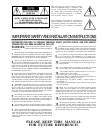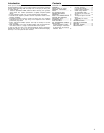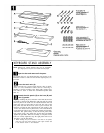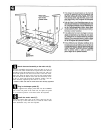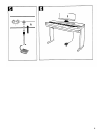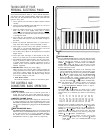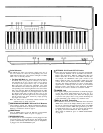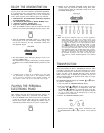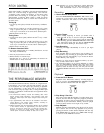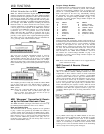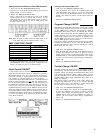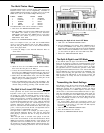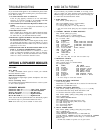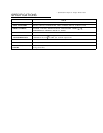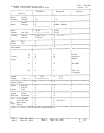
ENJOY THE DEMONSTRATION
To give you an idea of the YPP-50’s sophisticated capabilities,
it is programmed with a demonstration sequence which plays
automatically while demonstrating some of the instrument’s
voices. Short segments of the following pieces are included:
l 24 Preludes No. 15 in D flat major. “Raindrop” Op.28-15
by Chopin (PIANO voice).
l
The Harmonious Blacksmith by Händel (HARPSI voice).
l
Arabesque by Debussy (PIANO voice).
l
Fugue in G minor by Bach (P.ORGAN voice).
1. Press the POWER switch to turn the instrument ON. The
PIANO voice selector LED will light when the power is ON.
2. Slide the MASTER VOLUME control to a position about
three quarters of the way towards the “MAX” setting. You
can set this control for the most comfortable volume level
after playback begins.
3. The demonstration music will begin playing as soon as you
press the DEMO button.
The demonstration will play continuously, providing samples
of different voices, until the DEMO button is pressed a second
time.
l A different voice or tempo can be selected at any time while
the demonstration is playing (refer to the appropriate sections
of this manual for instructions). Voice changes, however, will
only remain in effect until the next automatic voice change.
PLAYING THE PERSONAL
ELECTRONIC PIANO
After making sure that the Personal Electronic Piano’s AC
plug is properly inserted into a convenient AC wall outlet:
1. Press the POWER switch located to the left of the keyboard
to turn the power ON. When the power is turned ON, the
PIANO voice selector LED will light (the PIANO voice is
automatically selected whenever the power is turned ON).
8
2. Initially set the MASTER VOLUME control about three
quarters of the way towards the “MAX” setting. Then, when
you start playing, adjust the VOLUME control for the most
comfortable listening level.
3. Select the desired voice by pressing one of the voice selectors.
4. Play.
Note: The Personal Electronic Piano has “8-note polyphony”
which means you can play up to 8 notes at once. If you
activate the Bass Split mode, up to two notes can be played
on the lower (bass) section of the keyboard and up to
six notes can be played on the upper fright-hand) section
(see Voice Selectors- The Bass Split Mode” on page
7). The Metronome also uses one note, so up to seven
notes can be played on the keyboard while the metronome
is running (the metronome uses one note of the right-
hand keyboard section when the Bass Split mode is active).
The Personal Electronic Piano also offers keyboard touch
response, so the volume and timbre of notes played can
be controlled according to how “hard” you play the keys.
The amount of variation available depends on the selected
voice.
TRANSPOSITION
The Personal Electronic Piano’s TRANSPOSE function makes
it possible to shift the pitch of the entire keyboard up or down
in semitone intervals up to a maximum of six semitones. “Trans-
posing” the pitch of the Personal Electronic Piano keyboard
makes it easier to play in difficult key signatures, and you can
simply match the pitch of the keyboard to the range of a singer
or other instrumentalist.
The MIDI/TRANSPOSE button and TEMPO and buttons
are used for transposition.
1. Press and hold the MIDI/TRANSPOSE button.
2. Press the TEMPO or button as many times as necessary
to produce the desired degree of transposition. Each time
the TEMPO or button is pressed the pitch of the key-
board is transposed by one semitone in the specified direction
(i.e. up or down). Pitch can be transposed up or down by
a maximum of six semitones.*
3. Release the MIDI/TRANSPOSE button.
* Pressing both the TEMPO and buttons simultaneously while
the MIDI/TRANSPOSE button is held produces normal keyboard
pitch.



